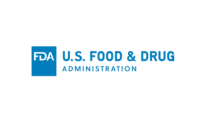Most people working in the food industry are well aware of the latest food labeling regulations 1169/2011 whose biggest safety issue is the labeling of allergens. These regulations came into force in December 2014, and many businesses have been frantically working to obtain compliance. However, there is another set of regulations that have been in force since 2006 that seem to have been generally overlooked by many; it is easy to find noncompliance examples in the market. The health and nutrition claims regulations 1924/2006 have common ground with the better known, new mandatory regulations. Combined, their aim is to provide companies with a comprehensive range of food laws to cover all aspects of product promotion; now that both of these regulations are in force, it would appear the level of enforcement is increasing.
As with other laws, the overall principle of the health and nutrition claims regulations is not to mislead but to keep consumers safe. As the regulations state, there are concerns about “an increasing number of foods labeled and advertised bearing nutrition and health claims. In order to ensure a high level of protection for consumers and to facilitate their choice, products should be safe and adequately labeled.”
Under the regulations, food producers should be accountable for the nutritional information and claims they makes through the description, appearance, pictorial images or comparisons. Basically, producers have to be not just aware of what is written on their labels but also how labels can mislead the consumer by the images that are portrayed or the images the brand wants to portray. A perfect example is a product with images that associate the product with nature or fitness of nutrition, even though it has no health or nutrition credentials to substantiate such an association.
This regulation does not just apply to food labeling but to all commercial communications, including adverting, leaflets, promotional materials, websites and campaigns, including those supported by public authorities.
The scope is extremely wide, including not just paid communications but any beneficial transactions including journalistic features. The regulations also apply to trademarks and other brand names “which may be construed as nutrition or health claims.” So calling yourself The Superfood Company or Vitamin C Boosting Business is not a get-out clause, but in fact t can make life very complicated if you have a wide range of products.
Another important aspect of the regulations is they do not distinguish between branded and generic foods made in a commercial context, so the same legislation applies to individual ingredients found in the product used to beneficially promote the product. This means that you still have to apply the regulations if you are referring to a single non-branded ingredient if it is part of an overall product promotion.
Under the regulations, health professionals, including dieticians and nutritionists, are not allowed to promote commercial products. Article 12(c) prohibits, “in commercial communications, health claims which make reference to recommendations of individual doctors, health professionals or associations.”
From a safety point of view, these regulations are not aimed at preventing an immediate threat to health. The view is a long-term one, due to the obvious rise in diet-related health conditions, such as diabetes and obesity. The regulations main objective is to consider the overall nutritional value of the product and how it should fit into a balanced diet. They state “a varied and balanced diet is a prerequisite for good health and single products have a relative importance in the context of the total diet.”
Considering the range of public knowledge, the regulations do set a benchmark of understanding to be an “average consumer who is reasonably well informed, observant and circumspect.” However, this needs to be differently assessed if the product targets a specific group such as athletes or diabetics from the perspective of their average understanding.
It is currently difficult to enforce the overall aims of the health and nutrition regulations due to the long-awaited but yet-to-appear nutritional profile. This is a cornerstone of the regulations, as it is the nutrition benchmark that defines the health value of each product. The nutritional profile was intended to be ready for 2009, but as yet, it is still undecided even though authorities in Europe, for many years, have used guidelines for health promotion that have been scientifically verified. There already exists a well-documented table that shows us for example that 6 g of salt and above is unhealthy and what the limits on saturated fat intake are, but as this is an EU directive, there are a whole batch of countries that are in on the discussion.
The nutritional profile will provide unhealthy limits of fat, saturated fat, salt and sugar. This means that products will have to comply with the nutritional profile before they can make any sort of health or nutritional claim. As it stands for all the good these regulations do without that profile, products can make claims with little regard to its overall health rating. So basically you can add calcium to a doughnut and give it a nutrition claim.
Claims can be either nutrition or health related, and both have very strict guidelines to follow. For nutritional claims, you first must determine if your product has a “significant amount” per portion. This is set at a minimum 15 percent of the recommended daily intake. If this applies, there is a definitive approved list of nutritional claims that can be made. There nutrition claims which are scientifically validated, but if they are not on the list, you can’t use them.
For health claims, the European Food Safety Authority (EFSA) has an online list of approved and unapproved health claims available for use that is constantly being updated. Again, only claims on the approved list can be used. If a claim is not on the list, you can apply for one that involves presenting a full scientific evidence-based evaluation to the EFSA.
Unfortunately, perfectly sound claims have not been approved because the presentation was inadequate. However, once a claim is approved, anyone can use it. Interestingly, the regulations do state that “non-beneficial nutrition claims are not covered” so you can be perfectly free in expressing how unhealthy or nutritionally barren your product is.
The hardest thing to evaluate is the difference between a statement of fact and a beneficial claim. For example, you could not say low glycemic index (GI) because this is not a listed approved claim, but you could technically say the GI is 24, as this is a “statement that just highlights the presence or absence.” However, it could also be seen as a positive attribute, in which case, the regulations would apply. This makes it difficult to make perfectly justified statements about things that are not on the list, for example, low cholesterol or GI, which consumers would find beneficial to know.
If you think these regulations do not apply, then reconsider if you see the use of vague throw-away terms in product promotions, such as good for you, healthy, nutritious, superfood and makes you feel good. Many companies may not think they need to follow these regulations, as they make no specific claims; however, many nonspecific words or phrases are classed as health claims. General statements like those above and many similar ones cannot be made unless they are backed up by a specific, approved health claim. One of the most well used words “energy” used to be acceptable just because the product was high in calories or carbohydrates. Thus, there are a plethora of sports-based products that refer to themselves as being an energy bar or drink, and under these regulations, they will have to justify why, as the calorific profile is no longer an option.
No compliant producers will have to change, which is good for consumer health and safety as they can no longer be misled by these fluffy nutritional additives and images. Now, at last, it’s all about showing hard scientific evidence that is not only good for you but for everyone else as well.
Liz Tucker is a nutrition and health consultant. She can be reached at liz@selectfood.co.uk.
Labeling of Health and Nutrition Claims




